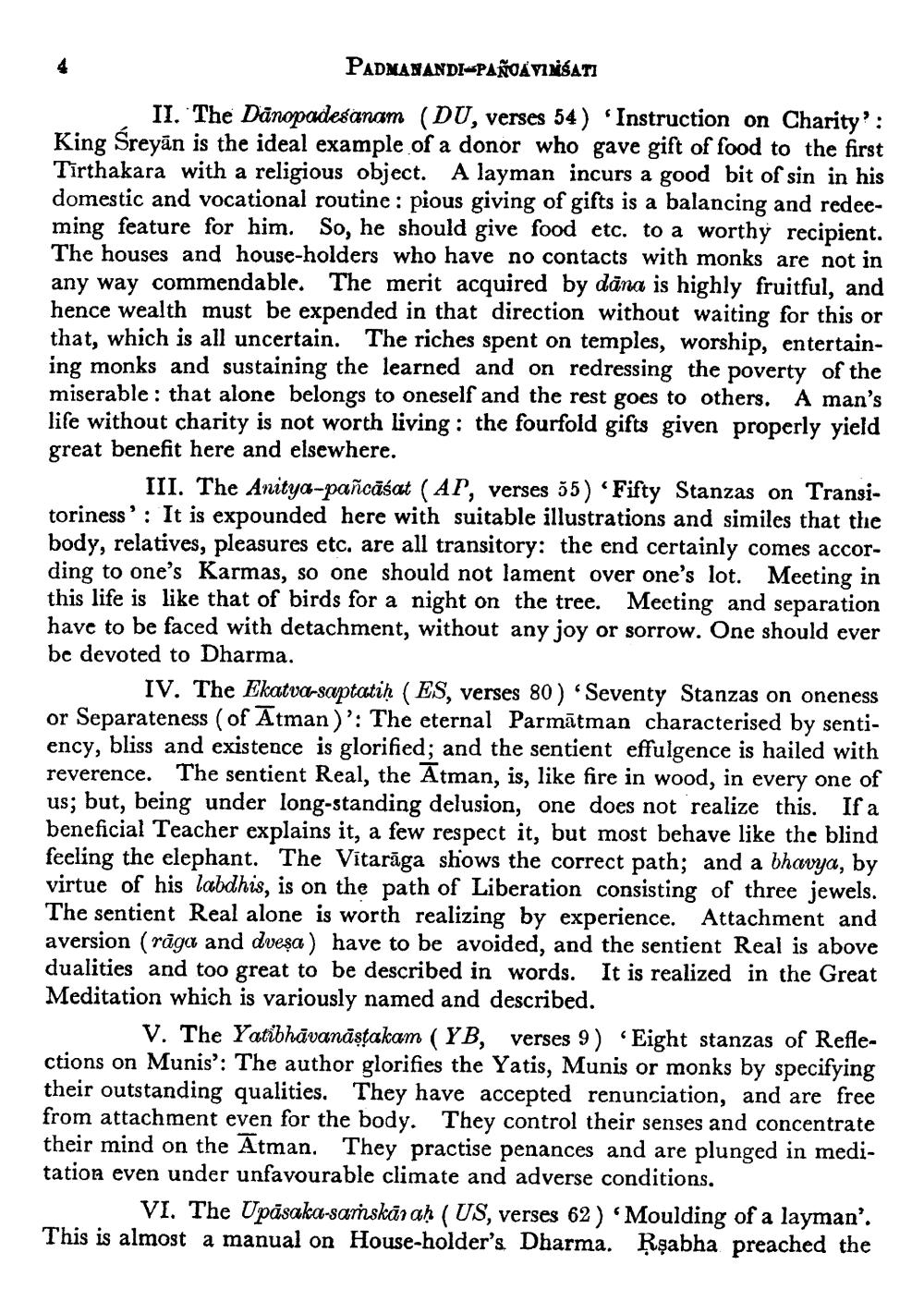________________
PADMANANDI-PAÑOAVIMSATI
II. The Danopadesanam (DU, verses 54) Instruction on Charity': King Śreyan is the ideal example of a donor who gave gift of food to the first Tirthakara with a religious object. A layman incurs a good bit of sin in his domestic and vocational routine: pious giving of gifts is a balancing and redeeming feature for him. So, he should give food etc. to a worthy recipient. The houses and house-holders who have no contacts with monks are not in any way commendable. The merit acquired by dana is highly fruitful, and hence wealth must be expended in that direction without waiting for this or that, which is all uncertain. The riches spent on temples, worship, entertaining monks and sustaining the learned and on redressing the poverty of the miserable that alone belongs to oneself and the rest goes to others. A man's life without charity is not worth living: the fourfold gifts given properly yield great benefit here and elsewhere.
III. The Anitya-pañcāśat (AP, verses 55) Fifty Stanzas on Transitoriness': It is expounded here with suitable illustrations and similes that the body, relatives, pleasures etc. are all transitory: the end certainly comes according to one's Karmas, so one should not lament over one's lot. Meeting in this life is like that of birds for a night on the tree. Meeting and separation have to be faced with detachment, without any joy or sorrow. One should ever be devoted to Dharma.
IV. The Ekatva-saptatiḥ (ES, verses 80) 'Seventy Stanzas on oneness or Separateness (of Atman)': The eternal Parmatman characterised by sentiency, bliss and existence is glorified; and the sentient effulgence is hailed with reverence. The sentient Real, the Atman, is, like fire in wood, in every one of us; but, being under long-standing delusion, one does not realize this. If a beneficial Teacher explains it, a few respect it, but most behave like the blind feeling the elephant. The Vitaraga shows the correct path; and a bhavya, by virtue of his labdhis, is on the path of Liberation consisting of three jewels. The sentient Real alone is worth realizing by experience. Attachment and aversion (rāga and dvesa) have to be avoided, and the sentient Real is above dualities and too great to be described in words. It is realized in the Great Meditation which is variously named and described.
V. The Yatibhāvanāṣṭakam (YB, verses 9) Eight stanzas of Reflections on Munis': The author glorifies the Yatis, Munis or monks by specifying their outstanding qualities. They have accepted renunciation, and are free from attachment even for the body. They control their senses and concentrate their mind on the Atman. They practise penances and are plunged in meditation even under unfavourable climate and adverse conditions.
VI. The Upasaka-samskāraḥ (US, verses 62) This is almost a manual on House-holder's Dharma.
Moulding of a layman'. Rṣabha preached the




